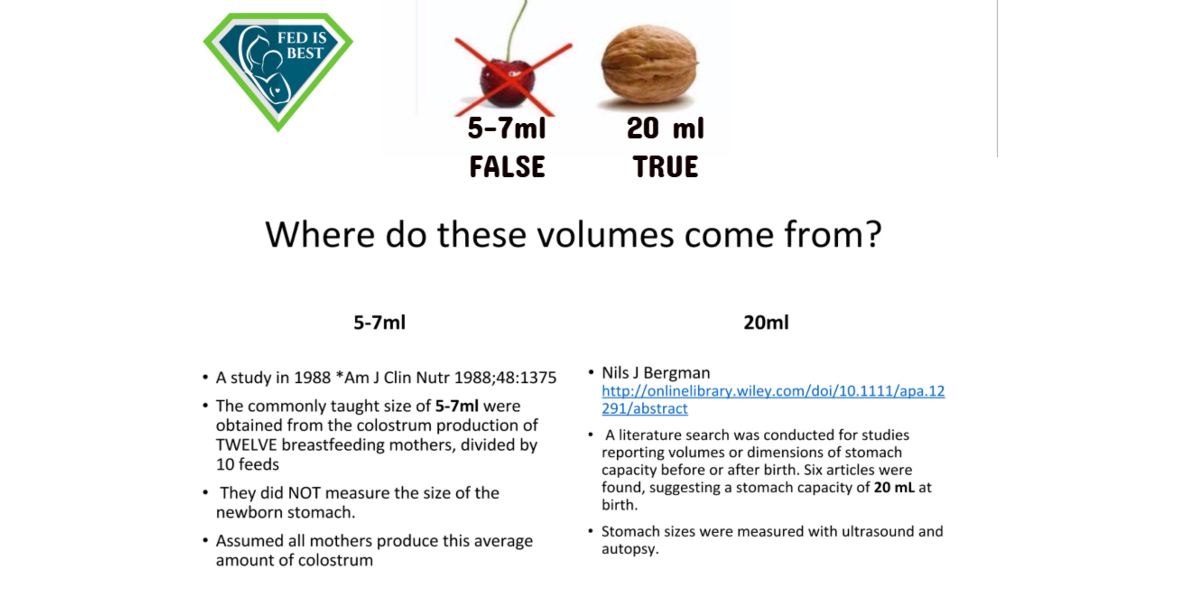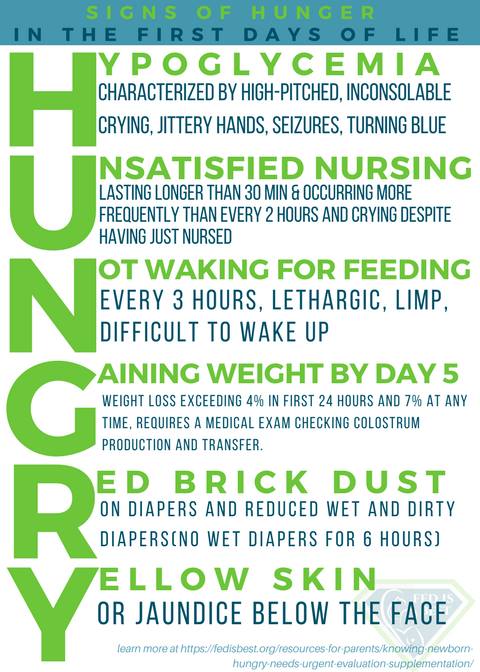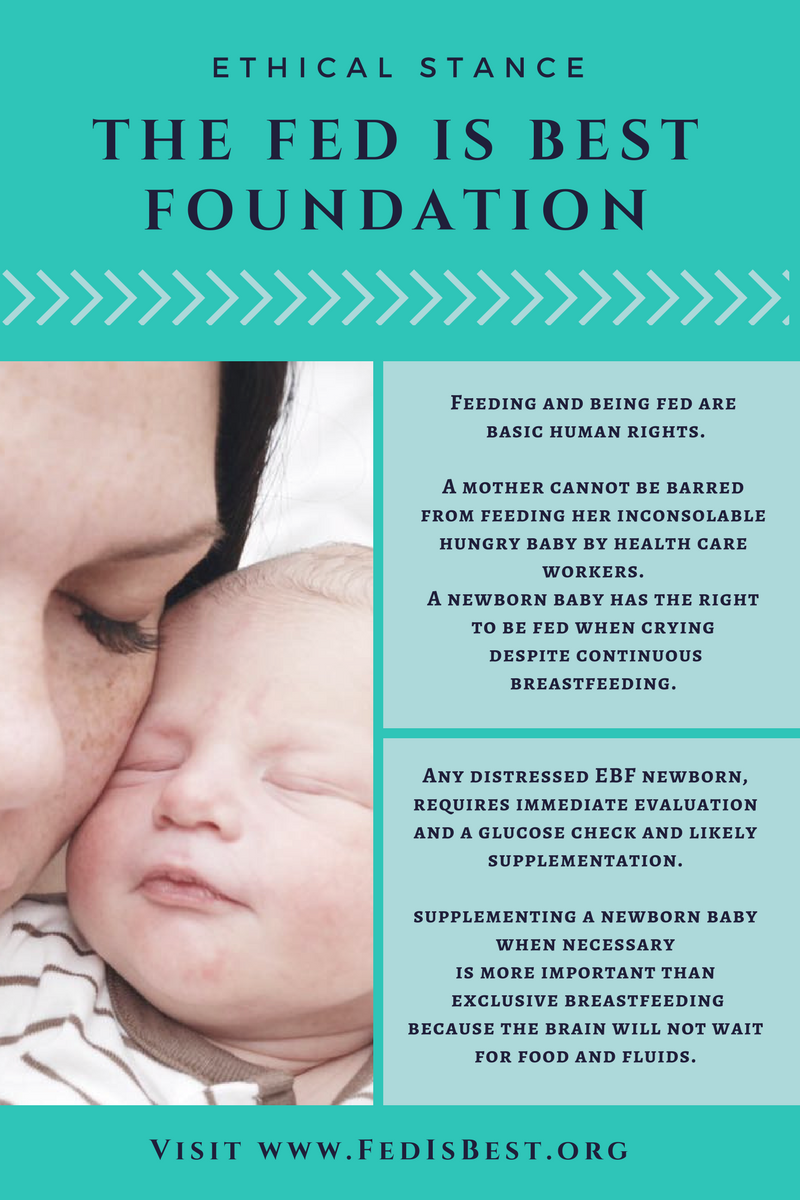Kati Pehkonen, YLE Finland 2018
A translated article from YLE (Finnish national broadcasting network, owned 99% by the Finnish state) has published an article on how Finnish newborns are starved in Finnish hospitals, how midwives are holding back formula and then finding that the baby is hypoglycemic.
Elias was less than 24 hours old when his father noticed the jitters. Already the night before at the Katiloopisto Maternity Hospital. Elias had cried a lot. During the early morning hours he finally settled after he had been syringe fed some donated breast milk. He was given 10 ml of milk, a total of 2 teaspoons.

During mid-morning Elias had started to cry again angrily. It appeared to his father as if the baby was also having muscle spasms.
The parents felt their baby was hungry. Although he breastfed eagerly, he was not satisfied. They asked the midwife for more donated breast milk. A long conversation followed. The parents were told that the Katiloopisto Maternity Hospital was a so called Baby Friendly facility. Babies were only allowed to be supplemented for medical reasons. The midwife did not feel this was one of those situations. She felt that the way Elias presented himself was just normal newborn behavior.

After a day of crying Elias was seen by the pediatrician who also noticed the jitters and decided to check the baby’s blood glucose. The glucose level was 1.6, which is alarmingly low (the reference value is 2.6mmol/l or higher). Elias was diagnosed with hypoglycemia It is a medical term for low blood sugar that can lead to brain damage.
I would have never believed that, in a developed country, babies can be starved at a maternity hospital, says the mother.
The Baby Friendly Hospital Initiative
The international Baby Friendly Hospital Initiative was launched by the World Health Organization (WHO) and UNICEF in 1991. The initiative was created to promote breastfeeding over increasing use of formula. The goal of the initiative is to support exclusive breastfeeding for the first six months of the baby’s life. Currently more than 152 countries are implementing the initiative. It has a proven impact on increasing the likelihood of babies being breastfed.
It is a basic parental right to decide how to feed their child
Elias was transferred to the NICU to receive iv glucose. His blood sugar level started to slowly increase and he was discharged home at five days of age. According to his discharge summary his hypoglycemia was partially caused by breastfeeding.
It was noted that he had not been able to transfer a single drop of milk at the breast.
The name of the baby Elias has been changed since his parents wish to protect his privacy. His mother is worried over the fact that parents are not given unbiased information on breastfeeding.
Parents must be told about the possible risks of exclusive breastfeeding and not just benefits of breastfeeding. They must also be given the right to make informed decisions for their child, such as how to feed them. I feel it is a basic right of a parent.

The National Institute for Health and Welfare (THL) has set a goal to make Finland the top breastfeeding country in the world. Studies have shown that breastfeeding is beneficial in preventing infectious diseases, chronic illnesses, and obesity. At the moment Finland ranks number three in the world. The top two countries are South Korea and Norway.
Read here for a blog about a mom from Denmark: Denmark’s restrictive breastfeeding policy forced me to sneak in sugar water to feed my starving baby.
The international Baby Friendly Hospital Initiative has an imperative role in promoting breastfeeding and increasing the total amount of babies that are exclusively breastfed. The certification, created by the WHO, is awarded to a hospital that is committed to promoting and protecting breastfeeding. The goal of the initiative is to have mothers exclusively breastfeeding from day one until their baby is six months old.
The Katiloopisto Maternity Hospital, where Elias was born, received its certification already back in 2010. The hospital is now closed due to water damage and mold, but four other Finnish hospitals still hold the certification. The popularity of the initiative has increased. Five other hospitals will apply for the certification within the next year.
The participating hospitals are committed ensuring that breastfeeding is their preferred infant feeding method. Pacifiers and bottles may have a negative impact on initiation of breastfeeding, and that is why they are not recommended. Supplemental feedings are often offered by a cup or an oral syringe.
Breastfeeding – natural but not always easy
Their message is clear. The lightly painted walls of a hallway at the OB/GYN department of the Seinajoki Central Hospital are covered with messages supporting breastfeeding:
“Breastfeeding – natural but not always easy. You are not alone. Information, help, and support are available. Trust yourself.”
“Imetysrauha.fi (breastfeedingpeace.fi). Just when I needed encouragement, somebody came to tell me that just breastfeed, you have enough milk.”
“It is good to be skin-to-skin with mom and dad because… You provide me with warmth, security, a drop of milk, and just a right amount of bacteria.”
Last year 1800 babies were born inside these walls. -We are hoping to have as many deliveries this year. We are seeing a decrease in births a bit later than some other regions, says the nurse manager Maria Rajamaki.
The Seinajoki Central Hospital was awarded the BFHI certification in November 2017. After four years of preparations the OB/GYN department was audited in the end of last year. Experts from the THL visited for two days assessing the hospital and interviewing the patients and staff.
The auditors did not share any of their findings after the first day. We were messaging each other all night long wondering what will happen, says lactation coordinator Sirkka-Liisa Dinder-Kuusisto. It surely was an emotional moment when we were awarded the certification, says lactation consultant, midwife Kati Mastosalo. I did have a few tears in my eyes, says lactation consultant, RN Heli Ojanpera.
The hospital must track its breastfeeding rates closely in order to maintain the certification. The latest statistics are from June, when 48% of the babies born in Seinajoki were exclusively breastfed. 35% of the newborns were given supplemental feedings for a medical reason, most often being low blood sugar. 16% of the babies were supplemented for non-medical reasons.
When we think of maternal obesity, we rank amongst the top three countries. Babies of overweight mothers’ often have problems with their blood sugar, says Sirkka-Liisa Dunder-Kuusisto.
The nurses use a specific form for supplemental feedings when documenting breastfeeding. They must document when, how much, why, and how the supplementation was given. Each entry is then signed by the nurse. According to the statistics, approximately 1% of postpartum mothers in Seinajoki do not breastfeed at all. The majority of mothers at least attempts breastfeeding, but not always successfully.
We had to smuggle formula to the hospital
Marika Saarikoski’s second daughter weighed a little over three kilos and screamed constantly. The baby was born at the Seinajoki Central Hospital in the end of last year, soon after the hospital was awarded the BFHI certificate.
Soon after birth the baby was placed skin-to-skin with the mother. According to the BFHI, skin-to-skin should continue at least for an hour as long as the baby is medically stable. Both the mother and the baby were undressed multiple times a day. Skin-to-skin promotes breastfeeding, but also helps to regulate the baby’s body temperature and can help the baby to acquire beneficial bacteria. Mrs. Saarikoski, however, felt overwhelmed. I felt they wanted me to be practically naked at all times. I tried to tell them I did not produce any milk for my first child. I knew that nobody in my family had ever produced milk, Mrs. Saarikoski says.
She attempted to breastfeed for a day and a half. The baby was angry and her breasts were sore. The midwife was wondering whether the baby was becoming jaundiced, which can be prevented by adequate milk intake.
At that point I told my husband to bring in some formula or the baby would die. But I got caught. The nurses saw my bottle and took it away, says Mrs. Saarikoski.

After her husband had smuggled some formula to the hospital Mrs. Saarikoski met with a lactation consultant. She examined Mrs. Saarikoski’s breasts and determined that she produced no milk. After the examination the hospital did provide the baby with formula. The situation made Mrs. Saarikoski feel uncomfortable.
I felt like you are nothing as a mother if you do not breastfeed.
“Breastfeeding is what is best for the family”
Last year a pen name “Mom’s a bit tired” criticized the Seinajoki Central Hospital’s BFHI practices in her letter to the editor in the region’s most circulated daily newspaper Ilkka. She writes felt pressured to breastfeed.
If the Baby Friendly means that an exhausted mother who is not able to breastfeed is still considered as the baby’s only source of food, even though the baby is not adequately fed, then I can only congratulate Seinajoki. You have truly deserved your certification, comments the writer.
The letter upset the hospital staff. They feel they provide individualized care and emphasize that they do assess multiple different factors, including babies’ blood sugar. Supplemental feedings are always offered when needed.
The mothers have given us a plenty of positive feedback. There is an abundance of research based information available. Most mothers do want to breastfeed since they are aware of all of the health benefits of breastfeeding for both the mother and the baby. It has been brought up time and a time again on a national level discussion, that breastfeeding is best for the family, says Maria Rajamaki.
Iida Pappinen is a textbook example of breastfeeding while nursing her two days old daughter who is holding on to her mother’s finger. I was looking forward to breastfeeding and was able to nurse right away enjoying it very much. I can also relax while I am nursing getting the best sleep. Lassi Pappinen chuckles at her comment. The first night when you were holding her, you simply could not go to sleep.
Mothers are not to be given inappropriate instructions
There is a framed poster on display at the Seinajoki Central Hospital that summarizes the goals of the BFHI. Those are the so called “Ten Steps to Successful Breastfeeding” by the WHO. Each hospital that has been awarded the certification must fulfill the requirements. BFHI Step six states:
“Do not provide breastfed newborns any food or fluids other that breast milk, unless medically indicated. The hospital must be able to show that a minimum of 75% of their full-term newborns are exclusively breastfed.”
More detailed information is not available at the hospital but can be found on the THL’s website. An addendum to the Step six states:
“Mothers are advised against the use of formula, scheduled feedings, and must not be given any other inappropriate information.”
“The hospital must provide a designated area for preparation of formula and education of mothers on its use, away from breastfeeding mothers.”
In Finnish hospitals breastfeeding and formula feeding mothers are not separated. At the Seinajoki Central Hospital the idea seems silly. Specialist secretary Kirsi Otronen who tracks the work of the National Program to Promote Breastfeeding, explains the reasoning behind the addendum the to the Step six being the known fact that a positive role model will have a positive impact on whether a mother will trust she is capable of breastfeeding or not. It also serves as a reminder to health professionals to be mindful not to unnecessarily encourage formula use.
If there are two mothers in a semiprivate room and one of their babies is given formula, the other mother may need extra support so that she does not start feeling she should be supplementing also. What other mothers do has a surprisingly strong impact on how a mother perceives her own ability to breastfeed.
Mrs. Otronen feels there is still work to be done in order to reduce promotion of formula to the public.
BFHI requires that there are not formula or bottles on display in designated breast pumping areas since it would send a conflicting message to breastfeeding mothers. Some may feel it is just nitpicking to try to remove formula advertisement from maternity and well-baby clinics, but they still use pens given by formula manufacturers and hand out promotional material.
Breast is best, but not the only option
The Fed Is Best Foundation was launched in the US as an attempt to loosen up the strict breastfeeding practices. The name of the foundation comes from the slogan “Breast is Best” as a reminder to the public that the most important things is a well fed baby.

The foundation has published data on data on babies who have even died due to breastfeeding complications.
According to international reports, some attempts to achieve exclusive breastfeeding status have lead to infants becoming dehydrated. Kirsi Otronen emphasizes that BFHI is based on strong scientific evidence. She feels it is also important to be aware of the wishes and needs of each individual mother. The mothers must not be made feel like they are not allowed to use formula.
In theory a baby may become dehydrated if mother’s milk in not in and the baby is not weighted often enough. The mother could simply just believe she has enough milk and may not even breastfeed often enough in the beginning. That is a disaster waiting to happen. To prevent this from happening newborns need close follow-up care.
Three American physicians have written about the risks of the BFHI in the Journal of American Medical Association. According to their article we are now finding more evidence of the dangers the strict following of the BFHI can lead to. The writers are also concerned about the BFHI recommendation on mothers to co-sleep with their babies since babies can suffocate or fall out of the bed.
There are crying, angry, hungry babies and exhausted mothers
The physicians interviewed for this article believe that combining an ideology with medicine is a dangerous idea. One of the leading medical practitioners wanted to comment on the topic only anonymously. He feels that breastfeeding has become an –ism, ideology, and religion.
Outi Tammela, MD, Chief of Neonatalogy and docent at the Tampere University Hospital says that following the BFHI too strictly can put patients at risk. At times the program also puts too much pressure on staff. Sometimes it feels as if it is the certification itself that is the main focus here and not the promotion of breastfeeding. The staff is given hard time and questioned why they supplemented. In some facilities staff must confirm with their signature that they were indeed the ones giving a baby some formula.
Dr. Tammela’s employer, the Tampere University Hospital, is also preparing to apply for the certification. Hospitals feel the certification gives them a competitive advantage. BFHI certification is seen as a reason to be proud of. According to Dr. Tammela, the certification can also place negative pressure on mothers.
There are crying, angry, hungry babies and exhausted mothers. Some mothers may have been up for two days while in labor and right after. And then they are expected to keep their babies skin-to-skin and breastfeed frequently.
All this gives you the feeling that parents are being pressured to make decisions based on biased information.
Elias is now a happy toddler. His development is being closely monitored because of his history of hypoglycemia. So far he has developed appropriately. I have a positive outlook on the future. Elias is doing well at the moment.
When Elias was first diagnosed with hypoglycemia, the baby and his mother were separated at times which in turn delayed the initiation of breastfeeding. Initially he was fed formula by bottle and gradually also his mother’s pumped breast milk. The situation changed after a few months. At some point he wanted to nurse. That is when it started. We got rid of the bottle, little by little, the mother says.
Elias then was exclusively breastfed. His mother feels it was bizarre how the practice to promote exclusive breastfeeding sent her son to the NICU and actually delayed the initiation of breastfeeding. All this gives you the feeling that parents are being pressured to make decisions for their child based on biased information instead of sharing with them all the pros and cons to support their decisions. We forget to respond the baby’s individualized needs. It is, after all, more important than breastfeeding.
— Kati Pehkonen, YLE Finland 2018

HOW YOU CAN SUPPORT FED IS BEST
There are many ways you can support the mission of the Fed is Best Foundation. Please consider contributing in the following ways:
- Join the Fed is Best Volunteer group to help us reach Obstetric Health Providers to advocate for counseling of new mothers on the importance of safe infant feeding.
- Make a donation to the Fed is Best Foundation. We are using funds from donations to cover the cost of our website, our social media ads, our printing and mailing costs to reach health providers and hospitals. We do not accept donations from breast- or formula-feeding companies and 100% of your donations go toward these operational costs. All the work of the Foundation is achieved via the pro bono and volunteer work of its supporters.
- Share the stories and the message of the Fed is Best Foundation through word-of-mouth, by posting on your social media page and by sending our resources to expectant moms that you know. Share the Fed is Best campaign letter with everyone you know.
- Write a letter to your health providers and hospitals about the Fed is Best Foundation. Write them about feeding complications your child may have experienced.
- Print out our letter to obstetric providers and mail them to your local obstetricians, midwives, family practitioners who provide obstetric care and hospitals.
- Write your local elected officials about what is happening to newborn babies in hospitals and ask for legal protection of newborn babies from underfeeding and of mother’s rights to honest informed consent on the risks of insufficient feeding of breastfed babies.
- Send us your stories. Share with us your successes, your struggles and every thing in between. Every story saves another child from experiencing the same and teaches another mom how to safely feed her baby. Every voice contributes to change.
- Send us messages of support. We work every single day to make infant feeding safe and supportive of every mother and child. Your messages of support keep us all going.
Thank you so much from the Founders of the Fed is Best Foundation!
